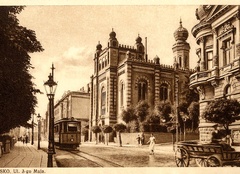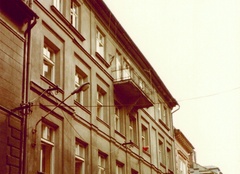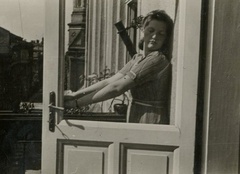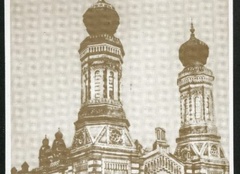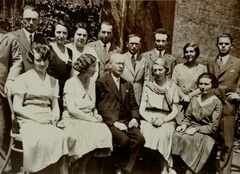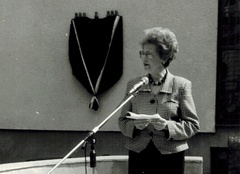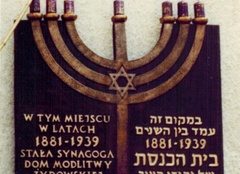Bielsko
Bee-EL-skoh (German: Bielitz, Czech: Bílsko, Hebrew: ביילסק, Yiddish: ביליץ / Bielitz)
Jews first began to settle in Bielsko in the late 1600s. However, the Jewish population remained minimal until the late 1800s, when restrictions on where Jews could live and what trades they could practice were finally lifted.
As the result of the rapid industrialization of the town in the 1800s, the Jewish population increased from 427 in 1837 to almost 2,000 by 1890. Many Jews worked in the weaving industry and by the end of the century some of them became owners of textile and other enterprises.
As the Jewish community grew, the first prayer hall opened in 1839. The first Jewish cemetery followed in 1849 and the Chevra Kaddisha burial society in 1868. A synagogue was built in 1881, designed in the traditional Moorish-revival style of the times. The synagogue was modeled after the Great Synagogue in Budapest, but was called “temple” because of its progressive leanings. The Jewish Society for Aid to the Sick was founded in 1894, and the Maccabi sports club in 1906.
By the beginning of the 1900s Jews represented more than half of the town’s doctors and almost all of its lawyers. They also worked as notaries, secretaries, teachers and administrators, as well as tailors, seamstresses, barbers, hairdressers, shoemakers and nannies. As with other Jewish communities in Europe, the Zionist movement to establish a Jewish homeland in the Middle East also gained a popular following in Bielsko.
After World War I (1914-1918) Bielsko became a part of the newly-independent country of Poland. Survivor Edith Mincberg recalled she could see the town’s synagogue from the balcony of her childhood home, adding “It was a magnificent building.” Nearby was the Jewish cultural center, “called the Bialik House, named after the famous Hebrew poet Chaim Nachman Bialik.” Finally, one street over was the “private Jewish elementary school that I entered” and “attended for six years.” Mincberg recalled attending “gymnastics after school in the Bialik House” led by Maccabi trainers.
She also remembered the beautifully-kept Jewish cemetery in Bielsko from when she was present at her paternal grandmother’s funeral before World War II.
The Jewish community had been able to thrive under the administration of Polish Prime Minister Józef Piłsudski, however faced renewed persecution after his death in 1935. Jewish stores were boycotted and a pogrom took place in 1936. Although it wasn’t bloody, the pogrom represented a foreboding of things to come. Mincberg remembered being able to see the events from her family’s third-floor balcony with no police in sight.
On the eve of the war the total population of Bielsko numbered about 20,000, including about 6,000 Jews. When Germany attacked Poland on September 1, 1939, Mincberg fled with her whole family during the night. All public Jewish buildings in Bielsko were burned down on September 4, 1939. Shortly after invading Bielsko the Nazis began their murderous path through Europe.
When Mincberg returned after the war she found the synagogue destroyed, with no trace left, and the cemetery overgrown with weeds covering the vandalized monuments. Buildings that had no exterior Jewish identity were completely redesigned and put to public use.
Mincberg later recalled that, “Life as we knew it—the people, the whole infrastructure supporting it—the whole world we knew was extinguished.”
Bielsko: Photographs & Artifacts
-
 This image from 1934 shows the back of the Bielsko synagogue as seen from Trzeciego Maja street. Built in 1888, its two onion-dome minarets were characteristic of the Moorish-revival style of the times. Photo courtesy of Edith Mincberg
This image from 1934 shows the back of the Bielsko synagogue as seen from Trzeciego Maja street. Built in 1888, its two onion-dome minarets were characteristic of the Moorish-revival style of the times. Photo courtesy of Edith Mincberg -
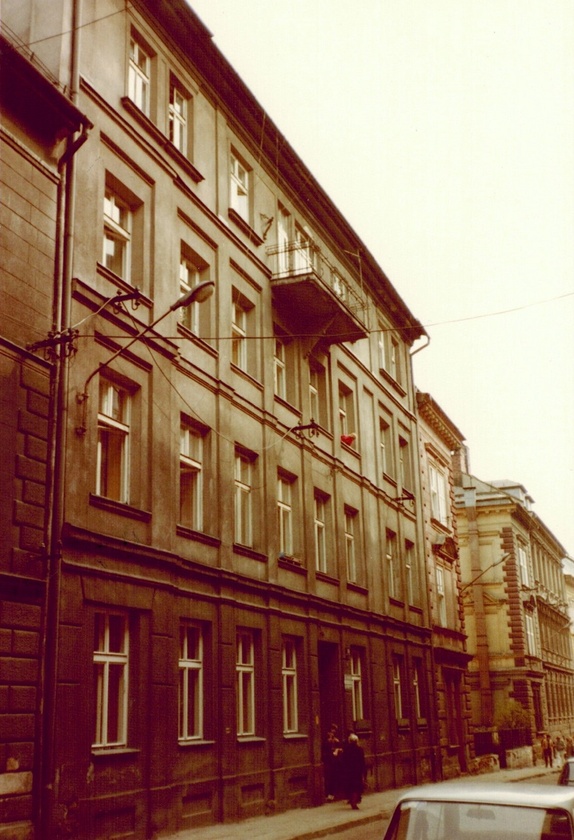 Survivor Edith Mincberg lived with her family on the top floor of this building. This photograph was taken in 1983 when Mincberg and her husband returned to visit Poland after the war. Photo courtesy of Edith Mincberg
Survivor Edith Mincberg lived with her family on the top floor of this building. This photograph was taken in 1983 when Mincberg and her husband returned to visit Poland after the war. Photo courtesy of Edith Mincberg -
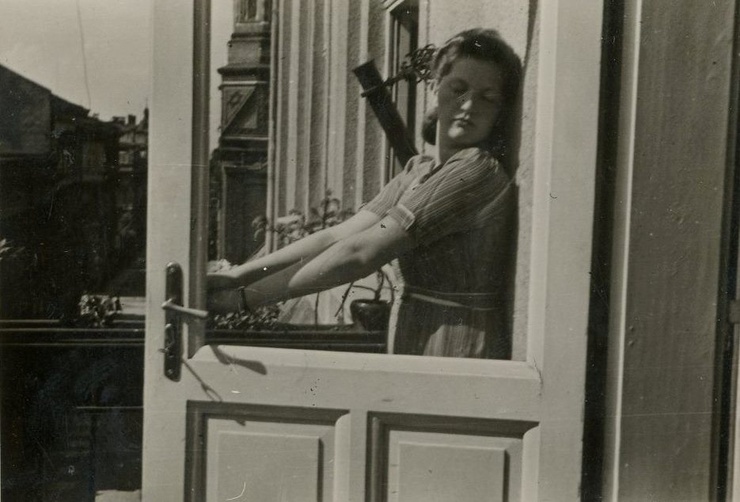 This photo, taken on July 1, 1939, shows Survivor Edith Mincberg on the balcony of her family's home in Bielsko. Behind her are the minarets of the synagogue. Photo courtesy of Edith Mincberg
This photo, taken on July 1, 1939, shows Survivor Edith Mincberg on the balcony of her family's home in Bielsko. Behind her are the minarets of the synagogue. Photo courtesy of Edith Mincberg -
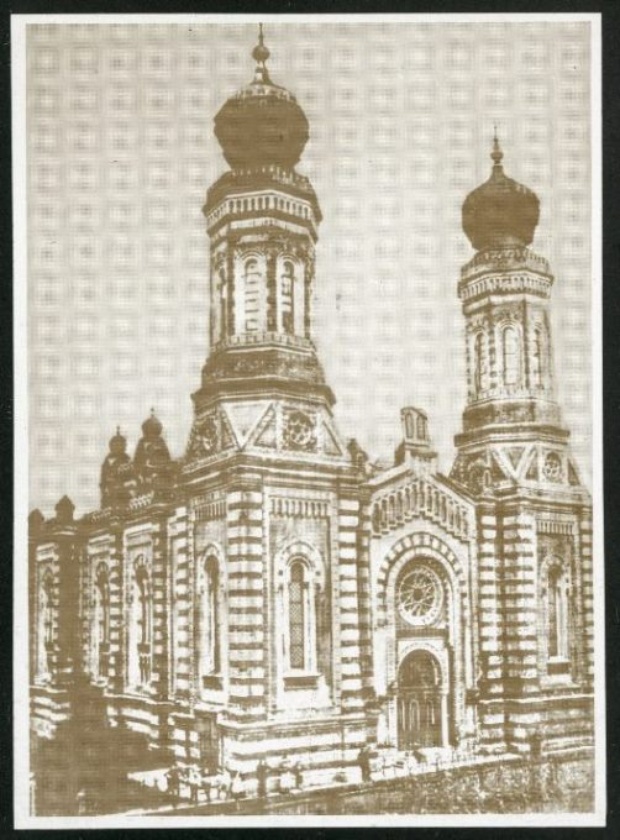 The synagogue of Bielsko as seen from the western side. Image courtesy of Edith Mincberg
The synagogue of Bielsko as seen from the western side. Image courtesy of Edith Mincberg -
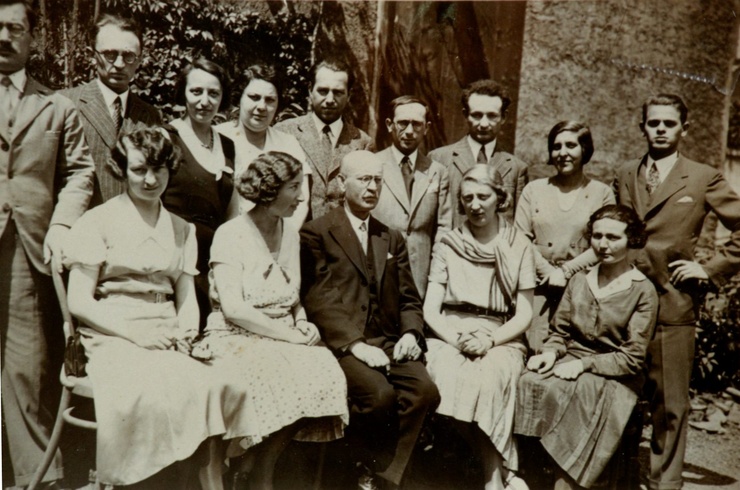 The faculty of the Jewish elementary school in Bielsko, circa 1929. Photo courtesy of Edith Mincberg
The faculty of the Jewish elementary school in Bielsko, circa 1929. Photo courtesy of Edith Mincberg -
 In 1991 Mincberg spoke at the dedication of the memorial plaque for the destroyed synagogue in Bielsko. Photo courtesy of Edith Mincberg
In 1991 Mincberg spoke at the dedication of the memorial plaque for the destroyed synagogue in Bielsko. Photo courtesy of Edith Mincberg -
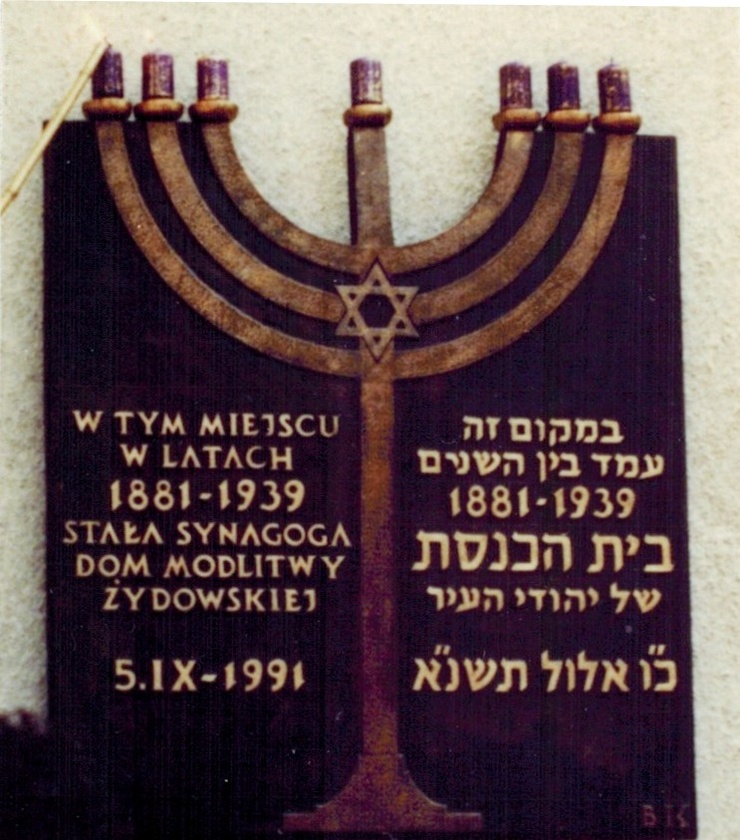 This commemorative plaque, dedicated on September 5, 1991, reads, "In this place from 1881 to 1939 stood the old Jewish synagogue and house of prayer." Photo courtesy of Edith Mincberg
This commemorative plaque, dedicated on September 5, 1991, reads, "In this place from 1881 to 1939 stood the old Jewish synagogue and house of prayer." Photo courtesy of Edith Mincberg
Destroyed Communities Memorial Slope
Bielsko: Survivors
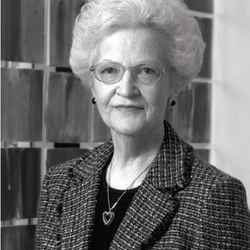
When Joe and I were married our only wish was to leave the slaughterhouse that Europe had become and have our children born as far away as possible. Thank G-d we accomplished that.
